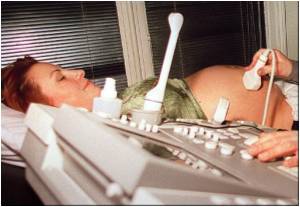Expectant mothers anticipate a smooth delivery, but still 13 percent of all women in the U.S. experience obstetrical complications.

Women who delivered by cesarean at low-performing hospitals experienced lacerations, hemorrhage, clots or infections at five-times the rate of high-performing hospitals -- 21 percent compared to 4.4 percent. Those who delivered vaginally at low-performing hospitals were twice as likely to suffer complications, 22.6 percent versus 10.4 percent at high-performing hospitals. Researchers determined the low, average or high performing hospitals based upon a calculation of the relative risk that a patient would experience a major complication.
"The key finding is that there is significant variability in maternal outcomes across US hospitals. This presents us with an opportunity to identify 'best practices' at hospitals with low rates of maternal complications in order to improve outcomes for patients in all hospitals," said lead author Laurent G. Glance, M.D., health outcomes researcher and vice-chair for research in Anesthesiology at the University of Rochester.
The American Congress of Obstetricians and Gynecologists (ACOG) and the American Society of Anesthesiologists (ASA) have launched an initiative to create a platform for measuring and reporting benchmarking information on maternal outcomes. This quality reporting initiative could become a powerful tool for improving maternal outcomes in the United States.
In this study, researchers analyzed 750,000 deliveries in the 2010 Healthcare Cost and Utilization's Nationwide Inpatient Sample. However, Glance considers the findings preliminary because they are based on administrative data which lack information on potentially important risk factors. It is also important to realize that most of these complications, although important, are rarely life-threatening.
Childbirth accounts for one in four hospital discharges, resulting in $100 billion in hospital charges in 2008 alone.
Advertisement
"In the OB field, individual practice styles, training and anecdotal experience shape how we practice, but we didn't expect to see such wide differences in maternal outcomes, which is all we studied here," said Glantz, of the University of Rochester. "For the most part babies and the mothers do well, but we can do even better by studying the hospitals that perform well and following their best practices."













